Spring 2018
| Editorial
Mark the Evangelist Futures Project |
Spring in our step I often think of Mark the Evangelist as a congregation of of like-minded good people so that, for instance, one has little fear of launching into a discussion of recent events in Canberra and coming to blows! Nevertheless I’m constantly amazed at range of interests you share with me and Rod Mummery, producer of this newsletter. So this month we have the latest from Alan about our church’s big project, and Robert’s account of worship in a very different context from ours. An interest in political affairs led Norma and Rob to a rally for the ABC and an account that sits comfortably beside John’s account of Kofi Annan. Closer to home Craig is infused with the spirit of spring as Rod adds yet another string to his bow filling in for Tim as reporter for Church Council while Tim is in Europe. Deprived of his violinist duet partner in church, (and having delighted many of us with his Serbian-style keyboard-playing in the recent Anja & Zlatna concert) our organist Donald is in rehearsal for a more conventional concert with Latitude 37, and we look ahead to some diary dates, including Ann’s notice of a Safe Church Awareness Workshop in November. I did say, didn’t I, that we are also a group with diverse interests? However you do it, enjoy the spring. Pray for rain. _____________________________ Ralph McTell wrote more songs than the iconic Streets of London. Having had the great good fortune to interview him, I know that many of his songs have a basis in spirituality. Here’s his After Rain. Suzanne Yanko, Editor From the Minister With spring seems to come a sense of the beginning of new things, the renewal of old things, the appearance of fresh opportunities. The world seems to get bigger, as it again becomes comfortable to be outside, and brighter, as the outside colours with more people, blossoms, green buds and thicker grass. That this really is a time of renewal, in a deeply human sense, is a gloriously pagan way of thinking about the matter – that life goes through cycles and that we do open up again with the sun. And a little paganism can be a good thing. Yet what puts the lie to this is our reflections on 1 John over the last five months. Love is at the heart of John’s message – Gods’ love for us in our love for each other. Whatever we might say about love, we cannot say that it is seasonal, a sometime – even oft-time – call or gift. For John, love is a matter of the Son, not the Sun. It is not the rise again of the sun above our dimmed horizons which is the source of life, but the rising of the Son over both dark night and bright day, bringing light to the one and washing out the light of the other. Sonrise does not come at the appointed time but makes the times new. It is by this unexpected rising that we set our clocks, the tick-tock of our hearts, and hear the call to love. Listen, then, for that call, in the sun and the shade, the heat and the cold – in the now in which the Son is always risen – while you enjoy being in the sun again! News from Church Council As Tim is enjoying a long holiday in Europe it falls to me to report on the activities of the Church Council. Church Council Office Bearers Mark the Evangelist Futures Project Audibility During Worship Long Service Leave Safe Church Comments, queries and suggestions are invited by the Church Council: Gaye Champion (Chair, Hotham Mission), Michael Champion (Elder), Belinda Hopper (Elder and Secretary), Gus MacAulay (Elder), Rod Mummery (Elder and Treasurer), Tim O’Connor (Elder and Chair), Maureen Postma (Elder), Craig Thompson (Minister) and Alan Wilkinson (MTEFP Coordinator). Mark the Evangelist Futures Project
On Wednesday 29 August MtE representatives (Rod Mummery, David Radcliffe and Alan Wilkinson) met with the MTEFP Development Adviser (Gauge Property – Guy Ayers) to refine the work program over the next 6 months. There are key points in that program where Church Council will be directly involved and there is one where consultation with the congregation will be essential. To elaborate on the key points for Mark the Evangelist –
The next six months will be very busy and exciting for the Mark the Evangelist Futures Project. While Church Council and the congregation will be involved at the key points outlined above, the Finance and Property Committee (Rod, Craig, David R, David V, Greg and Alan) will continue – as the MtE working group – to contribute to the day-to-day requirements of the Project. Throughout the whole period, monthly updates will be provided for the congregation. A Holy Week on Malta 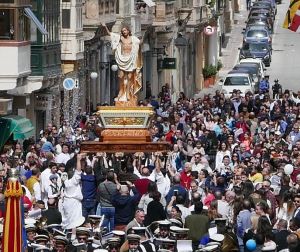 The crowds accompany the Risen Christ to the church on Senglea, Malta. Susan and I had a more than usually interesting Easter this year. After a Palm Sunday in Cambridge (and a eucharist in the church where we married 50 years ago, with former archbishop of Canterbury Rowan Williams presiding), we flew into Malta for Holy Week, a long way from our normal liturgically-respectable Easter. The three great days of Easter began, as usual, on Holy Thursday night with the ceremony of the washing of the feet – and for that we went to the church up the steps from our Air BnB on Senglea, one of two narrow peninsulas which reach out across the harbour towards Valletta (reachable by ferry). On Good Friday we attended St Paul’s Anglican Co-Cathedral in Valetta for the (too) solemn English service. But as the sun began to set, back on Senglea, we watched, with literally hundreds of locals, the procession of the Passion. Near-lifesize figures or tableaux, usually kept in side-chapels of Our Lady of Victory Catholic Church on the summit, were brought out on platforms and borne on poles by teams of men. Each moved out in order into the square, down and up the road the length of the promontory, and back along the upper road to Our Lady’s church, taking brief rests on the way. Each tableau was preceded by a small group of children, and a choir led the chanting of a hymn. There were brass bands and drums to keep the beat, and colourful banners. And everywhere, walking, singing, looking, the old and the young, mothers and matrons, fathers and old gaffers. It was a strange mixture of solemnity and festivity.Holy Saturday is always a day for reflection (we went out to Mdina and the ancient temples). On Easter Day, we climbed the steps to St Philip’s church at the far end, and were able to catch the morning Paschal Mass. As we came out, the procession from Our Lady’s Church had arrived, and the square was crammed with people, but this time, there was only one tableau, that of the Risen Christ, arms outstretched in blessing. The men took up their poles again and made their way along the level road in the direction of the Our Lady’s Church. Now the singing was joyful, and as we passed under the eaves of the old buildings, people showered us with confetti, like a ticker-tape parade in New York. The bearers had another rest near the pub, and those within came out to pay their respects. Suddenly there was a change in atmosphere. Bearers threw off their white robes, and changed into runners, some older ones retired in favour of younger men. They hoisted Jesus into the air, and to the rapturous applause of all, they ran with him, for about fifty metres. And stopped, exhausted. Now they were within sight of their destination and raising the statue again (and with extra men under the poles), ran into the square, the crowd following before and after, cheering and clapping. There were prayers and a blessing, and the Risen Christ was taken into Our Lady of Victory’s for another year. I should record that on the neighbouring peninsula of Vittoriosa, the same run resulted in Jesus breaking his arm. But here was a true village celebration of Easter, done now as it had been for generations, involving the whole community. Those of us who live in western cities will never experience such events again. In Australia, even where a Good Friday ecumenical procession dares to walk through the streets, they are likely to receive abuse from sleepy citizens. Neighbours complain when church bells are rung. A religious procession here attracts no crowds – with one exception. A few years ago, the Rev. Peter Gador-Whyte, then at Wesley Church in the city, commissioned Anna Meszaros (whose work we know at Mark the Evangelist), to create bas-relief depictions of the Stations of the Cross. All but one city church placed their station by their footpath. Peter and the other city clergy began to follow the stations on Good Fridays, the accompanying crowds slowly increasing, and this year, I believe, some 2000 people were involved (and the final church – guess which – erected its ‘station’). It has become a major ecumenical event in the life of Melbourne, a little glimpse into the ways that communities once marked Easter – with their bodies. Donald Nicholson’s concert Local Heroes Subscription Concert 3 – L’amour: Music and the Language of Love Saving the ABC The queue of waiting people extended around the corner and all the way up Collins St to Russell St. Hundreds couldn’t get in. Even so, the event went without notice in the media. Staff of the ABC itself were forbidden to mention it and the commercials had a vested interest in ignoring it. So we would like to give it an airing. It is controversial, and we do have a personal interest to declare in that our daughter works for Radio National.
Here are a few of the points that were made. There is no independent press in Egypt. The democratic process is poorly served by media out to make money rather than serve the public. So said Peter Greste, chair for the day, who spoke from his experience of being arrested for doing his job. The kind of people being appointed to the board significantly changed about 20 years ago. Fiona Stanley was speaking from her experience as a former Board member. “I like to work for the ABC, even though I am paid much less than when I work for the commercials. The ABC is our Library of Alexandra, and I for one will not stand by and watch them burn it”. These were the fighting the words of Magda Szubanski. The ABC can reach rural areas and used to broadcast overseas, areas not covered by others. Children’s programming is different. If you lost programs like Q & A, Four Corners, The World Today or PM you would be left with “60 Minutes”. John Faine had been given special permission by the ABC management to speak. “Our” ABC has 80% public support. I’ve never met a politician with support like that! So said Margaret Reynolds who presides over “Friends of the ABC”. These were the main speakers. Other comments came from many sources. I worry about monopoly. We want greater breadth of interviews, not less – Adam Bandt I get butterflies in the tummy when I know I am to be interviewed by John Faine, but I have to feel that for the sake of accountability – Ged Kearny, member for Cooper. There are four Australian icons currently under attack: the CSIRO, the Australian Electoral Commission, the Bureau of Meteorology and the ABC, which is the most trusted organisation in the country – Barry Jones. I want to pay respect to ABC elders, past and present, such as John Clark and Brian Dawe – Fr Bob Maguire. Julian Burnside and Rosie Batty spoke via video link. Other comments from the audience included: The international influence in broadcasting is being taken by China. An independent voice is essential for the democratic way of life. Staff morale is badly affected by the talented employees that have gone and are going out the door due to funding cuts. The ABC is barely half the size it was a few years ago. The ABC aims to set the gold standard for quality, ethical, specialist and diverse broadcasting. The ABC provides social cohesion in emergencies, such as bush fires. The ABC is good for business, an example being the continued popularity of “Kath and Kim” even when the commercials took it over. The ABC’s children’s programs are special. The lighter touch to a very serious afternoon was added by a comedian who conducted a mock auction of the ABC, eventually knocking it down to Rupert Murdoch, and a special song, “Keep your grubby hands of the ABC”, composed for the occasion, was sung by the song writer himself, Tim Solly. We all joined in. Finally, a statement was passed with unanimous consent, that set out five demands, which were briefly:
There may be questions to be asked about the relevance of the ABC in the digital age, when younger generations get their information on their phones and through social media. It was noticeable that the audience was largely grey power. Perhaps the outcry is from an older generation struggling to cope with change and apprehensive about the new world developing around us. Nevertheless we came home stirred for the cause, and with a banner saying “ABC. NOT FOR SALE”, which is now prominently displayed in our window facing Toorak Rd West. Kofi Annan The Secretary-General may bring to the attention of the Security Council any matter which in his opinion may threaten the maintenance of international peace and security. UN Charter Article 99
In office Kofi Annan chose outstanding staff and they served him with devotion. He also made wise senior appointments to the Secretariat. He recognised the need for reforms, planned them consultatively, and made many organisational improvements, for example by strengthening arrangements for collaboration between the organisational silos within the system. He also made his own position more manageable by creating a position of Deputy Secretary-General to take over administrative activity; and by reducing the number of Under-Secretary-Generals and CEOs who reported to him. His concern for leadership of the staff is illustrated by his compassionate handling of 9/11. Secretariat staff shared the shock, grief and anxiety of other New Yorkers. Fortunately only one UN staffer was killed by the collapse of the Twin Towers, but many staff had children at schools where parents did not come home on Tuesday evening. On Wednesday there were eleven threats to the UN, all of them false alarms, but evacuations continued. Kofi quietly and effectively addressed a packed UN staff meeting in the General Assembly hall on Friday morning. He picked up such themes as the horror of the attack, solidarity with the host country, and the enhanced importance of the UN’s role. In following days he visited departments, meeting those most directly affected and speaking to groups. Kofi’s effectiveness as a policy leader is widely acknowledged. His book of collected speeches, We the Peoples: A UN for the 21st Century demonstrates the breadth of his principled commitments, and the strength of his goal of inspiring effective action. The subjects extend from increasing the effectiveness of the UN; through inclusive development; gender equality; controlling greenhouse gas emissions; seeking security through peace; turning ‘swords into ploughshares’; strengthening human rights as ‘The very heart of the UN’s mission’; and building Responsibility to Protect. His skills as a manager are less well known. I had responsibility for leading preparation of a Special Session of the General Assembly on social development held in Geneva in June 2000. When reporting to him earlier in the year I presented a quick overview of both the substantive and organisational plans. He listened attentively, asked questions, made a few suggestions and the briefing was completed in a little over half an hour. He wanted the Special Session to be innovatively decisive. The conference made 40 or so fresh decisions, one of which was to set a global target for halving serious poverty by 2015. This became the first of the Millennium Development Goals, the establishment of which was one of his great achievements. Amongst his most difficult tests was handling American hubris. He persistently attempted to dissuade the Bush Administration from unprovoked aggression against Iraq but finally had to say publicly that the 2003 invasion was illegal under the UN Charter without Security Council authorisation. To address the consequences, he established the High Level Panel on Threats, Challenges and Change. This recommended strengthening the criteria with which the Security Council should evaluate proposed military action, and then the SG proposed those to the General Assembly. This was rejected but existing Charter provisions were reaffirmed. Of course his principled stance was condemned by many people in the US but by far fewer in the rest of the world. However he had been a leader of the critique of the Iraq war. Kofi Annan was dedicated to strengthening inclusive dialogue. We naturally invited him to open the second UN World Youth Assembly in Porto, Portugal in 1998 but he had to deal with a crisis in New York the day before and was expected not to be able to attend. However he flew overnight, arrived at 8.30 am, in time to be briefed and then gave an inspiring address. He challenged the participants by saying that youth are often told that they are the leaders of tomorrow, but ‘the world needs your leadership today’. He elaborated with concrete examples. He received an intensely enthusiastic standing ovation and the conference immediately responded by starting active planning. He went on to open the first world youth ministers’ conference in Lisbon next day. Kofi Annan was the most gracious person I have ever met in public life. He was dedicated to human wellbeing, and to seeking peaceful conflict resolution. He was remarkably generous with his time, was an inspiring speaker, and was a disciplined leader. He was both principled about goals and pragmatic about means, while maintaining a hopeful vision of a peaceful and just world. As required, he outstandingly ‘embodied the principles and ideals of the Charter’. Professor John Langmore was Director of the Division for Social Policy and Development in the UN Secretariat in New York for five years starting from January 1997. Noticeboard 16 September After church talk – Robert Gribben: The Great Prayer at the Lord’s Table – its origins and purpose 4 November All Saints luncheon following worship 25 November Safe Church Awareness Workshop _____________________________ A Safe Church Awareness Workshop Sunday 25 November, 11.30am after Worship To all congregation members Church Council invites you to a Safe Church Awareness Workshop on Sunday 25 November after church. All local appointed leaders – largely those who are required to have Working with Children Police Checks – are required to attend such a workshop. If this date does not suit you all churches will be arranging a workshop so there will be other sessions scheduled which you can attend. The invitation is extended to any church members who would be interested. It is of relevance to us all. The Safe Church Awareness Workshop provides leaders and congregational members with knowledge and understanding of our Safe Church policy and procedures. It is a valuable opportunity to understand the importance of striving to be a Safe Church in our community and how each one of us is an important part in our success. Our Safe Church Contact Person, Ann Wilkinson, will be organising the workshop. Please talk with her if you have any questions. She will follow up with you early in October. |

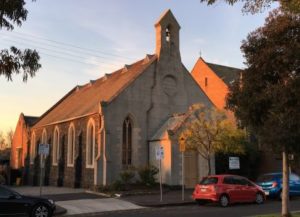
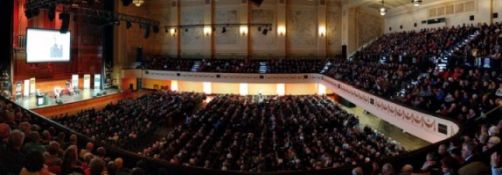
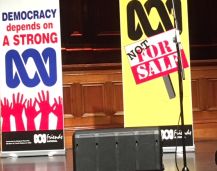 Inside the Town Hall the atmosphere was highly charged. Protest banners decorated the stage. People were excited to be there, but underneath anxious about the deteriorating situation. As the first speech, by Peter Greste, developed, every point was vigorously applauded, until Peter warned people about getting sore hands, and said it would become a very long meeting if this response continued.
Inside the Town Hall the atmosphere was highly charged. Protest banners decorated the stage. People were excited to be there, but underneath anxious about the deteriorating situation. As the first speech, by Peter Greste, developed, every point was vigorously applauded, until Peter warned people about getting sore hands, and said it would become a very long meeting if this response continued.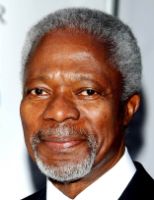 Those concerned with global peace and justice are grieving the death of Kofi Annan. He was elected UN Secretary-General in 1996 after a vigorously contested election campaign. Boutros Boutros-Ghali from Egypt had been denied a second term by the opposition of the US Secretary of State in the Security Council. There was consensual agreement that an African should be allowed to complete that continent’s ten-year term. A Sub-Saharan had the strongest chance. Having worked in the Secretariat throughout his career, Kofi Annan was well known and perceived as a welcome alternative to ‘The Pharaoh’.
Those concerned with global peace and justice are grieving the death of Kofi Annan. He was elected UN Secretary-General in 1996 after a vigorously contested election campaign. Boutros Boutros-Ghali from Egypt had been denied a second term by the opposition of the US Secretary of State in the Security Council. There was consensual agreement that an African should be allowed to complete that continent’s ten-year term. A Sub-Saharan had the strongest chance. Having worked in the Secretariat throughout his career, Kofi Annan was well known and perceived as a welcome alternative to ‘The Pharaoh’.